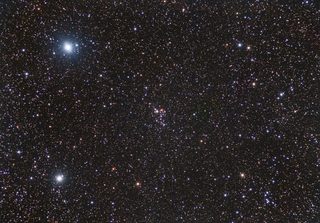
- Constellation: Cepheus
- Right Ascension: 22 12 30.0
- Declination: +57 15 54
- Distance: 9,200 ly
- Estimated Age: 11.8 million years
- Trumpler Class: II3m
NGC 7235 is a sparse open cluster located in Cepheus. Originally cataloged as NGC 7234, but due to a reduction error which pointed to a nonexistent object, it is now associated with NGC 7235.
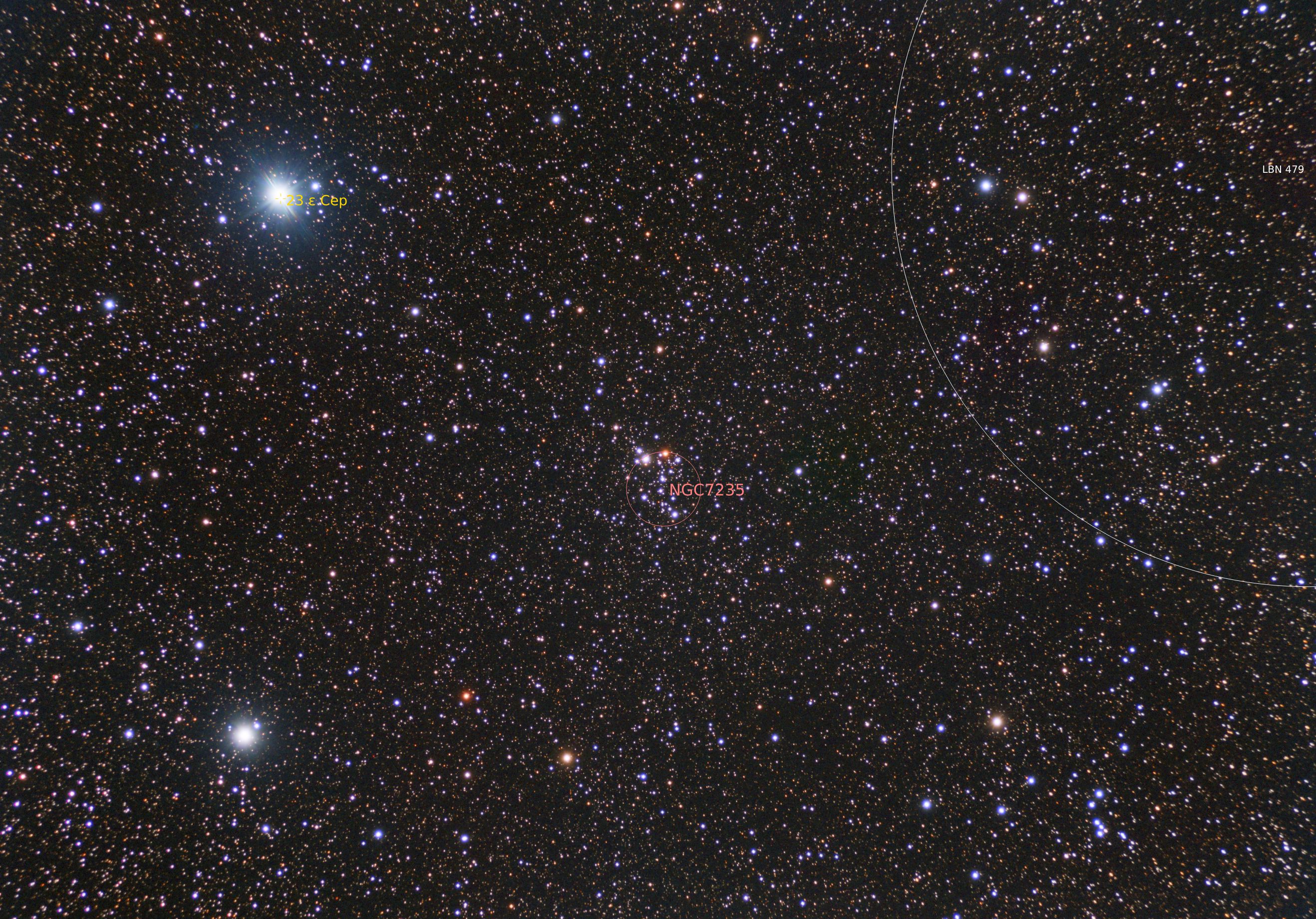
- Details
- Category: Open Clusters
- Telescope: Explore Scientific 127 Refractor
- Camera: ZWO 2600 MM
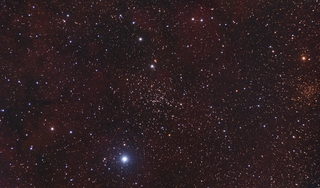
- Constellation: Cepheus
- Right Ascension: 23h 50m 1.75s
- Declination: +68 02 16.7
- Distance: 2,400 ly
- Estimated Age: 1.8 billion years
- Trumpler Class: II2m
NGC 7762 is an old open cluster located in Cepheus embedded in part of the nebula of Sh2-171.
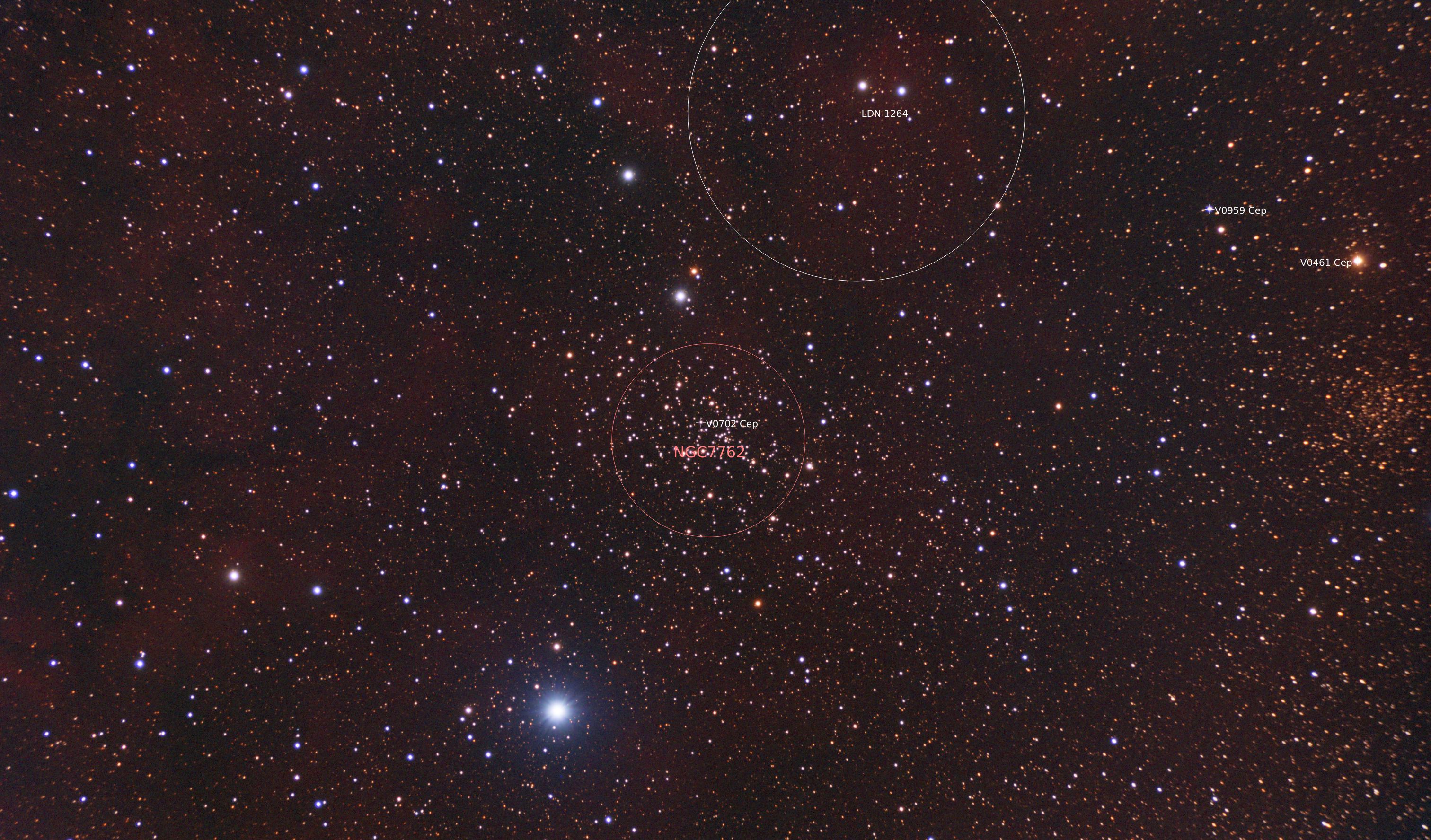
- Details
- Category: Open Clusters
- Telescope: Explore Scientific 127 Refractor
- Camera: ZWO 2600 MM
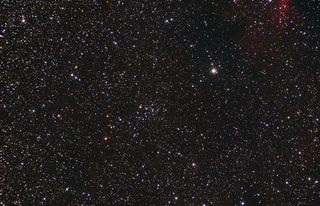
- Constellation: Cepheus
- Right Ascension: 22 h 20 m 10s
- Declination: +58° 07' 41"
- Distance: 6,900 ly
- Estimated Age: 47 million years
- Trumpler Class: II3m or III2p
NGC 7261 is an open cluster located in Cepheus. Also partly visual in the upper right is part of emission nebula Sh-135.
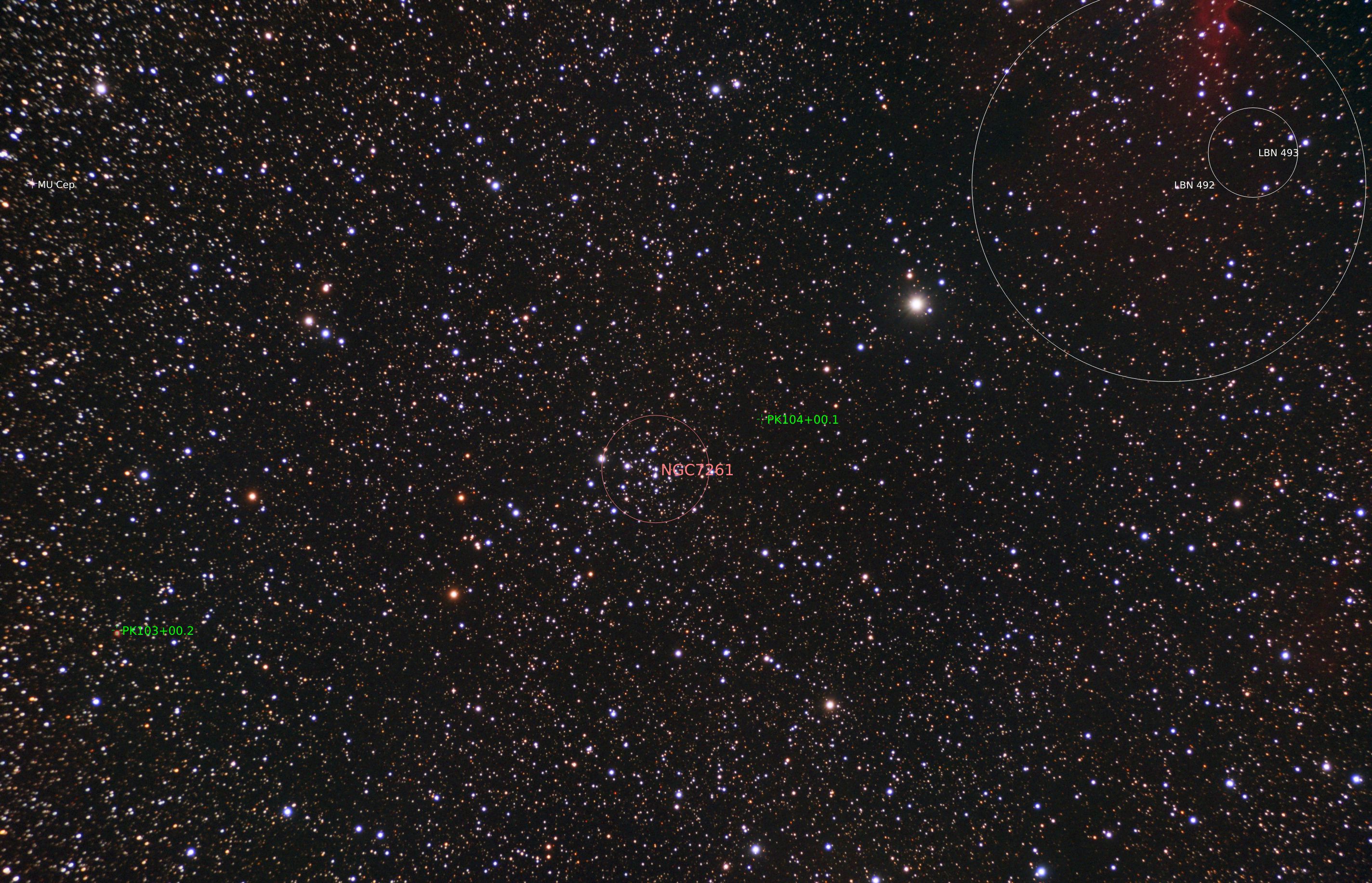
- Details
- Category: Open Clusters
- Telescope: Explore Scientific 127 Refractor
- Camera: ZWO 2600 MM
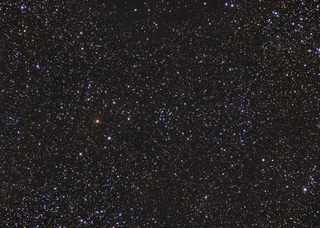
- Constellation: Cassiopeia
- Right Ascension: 0h 39m 28.8s
- Declination: +61° 6m 54s
- Distance: 4,200 ly
- Estimated Age: 510 million years
NGC 189 is an open cluster located in Cassiopeia. Not a lot of general information found on this cluster.

- Details
- Category: Open Clusters
- Telescope: Explore Scientific 127 Refractor
- Camera: ZWO 2600 MM
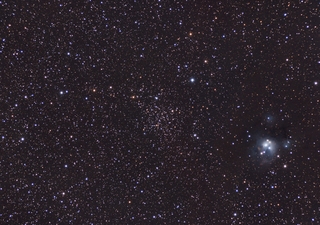
- Constellation: Cepheus
- Right Ascension: 21h 45m 10.0s
- Declination: +65° 46′ 18″
- Distance: 5,500 - 6,200 ly (est)
NGC 7142 is a older open cluster located in Cepheus. Also visible are the young reflection nebula of NGC 7129 located 3,300 light years distant from Earth.
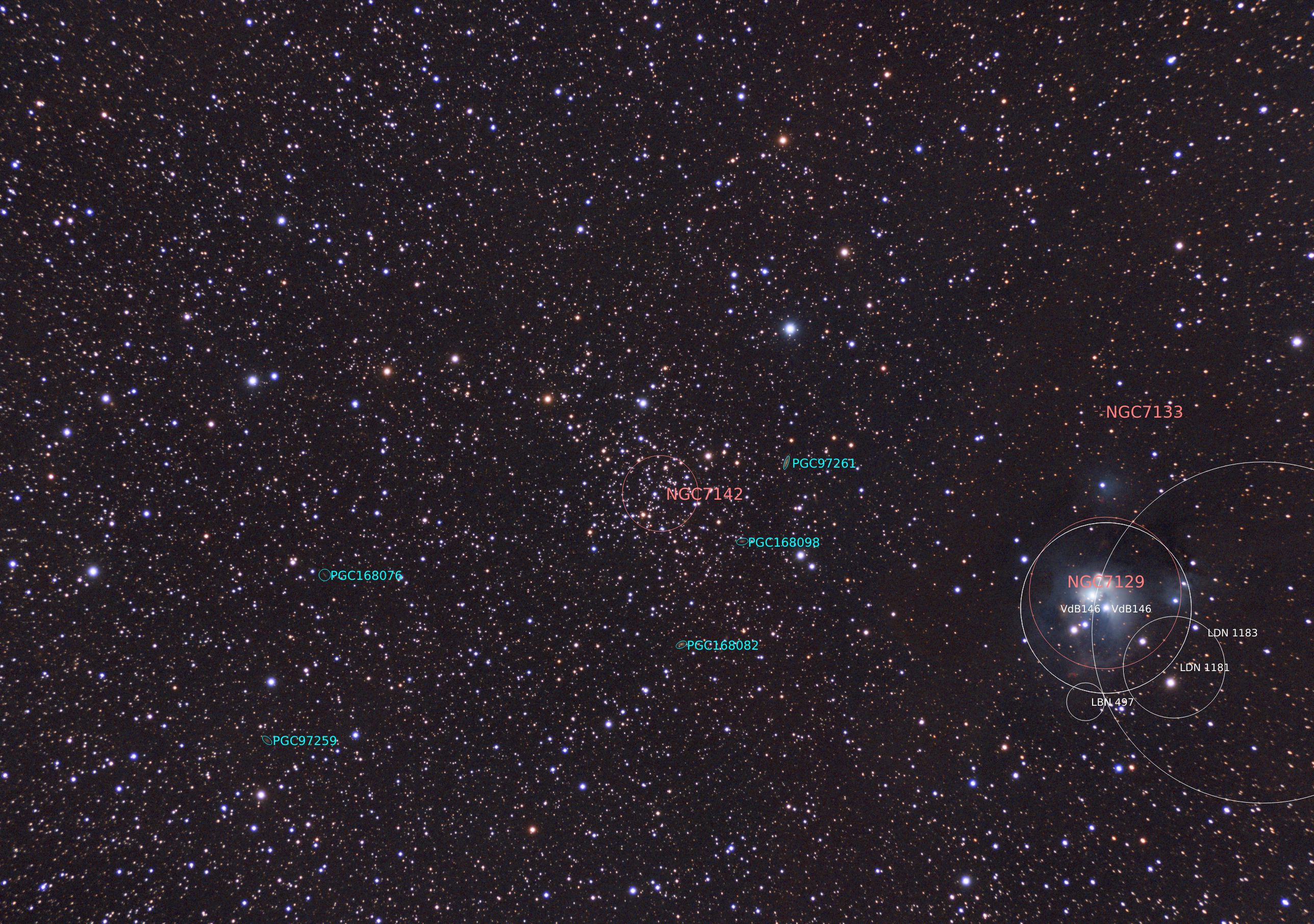
- Details
- Category: Open Clusters
- Telescope: Explore Scientific 127 Refractor
- Camera: ZWO 2600 MM

- Constellation: Cygnus
- Right Ascension: 21h 30m 28s
- Declination: +51° 36’ 01”
- Distance: 4,200 ly
- Estimated Age: 130 million years
NGC 7086 is a open cluster located in Cygnus. Estimated age is around 130 million years.
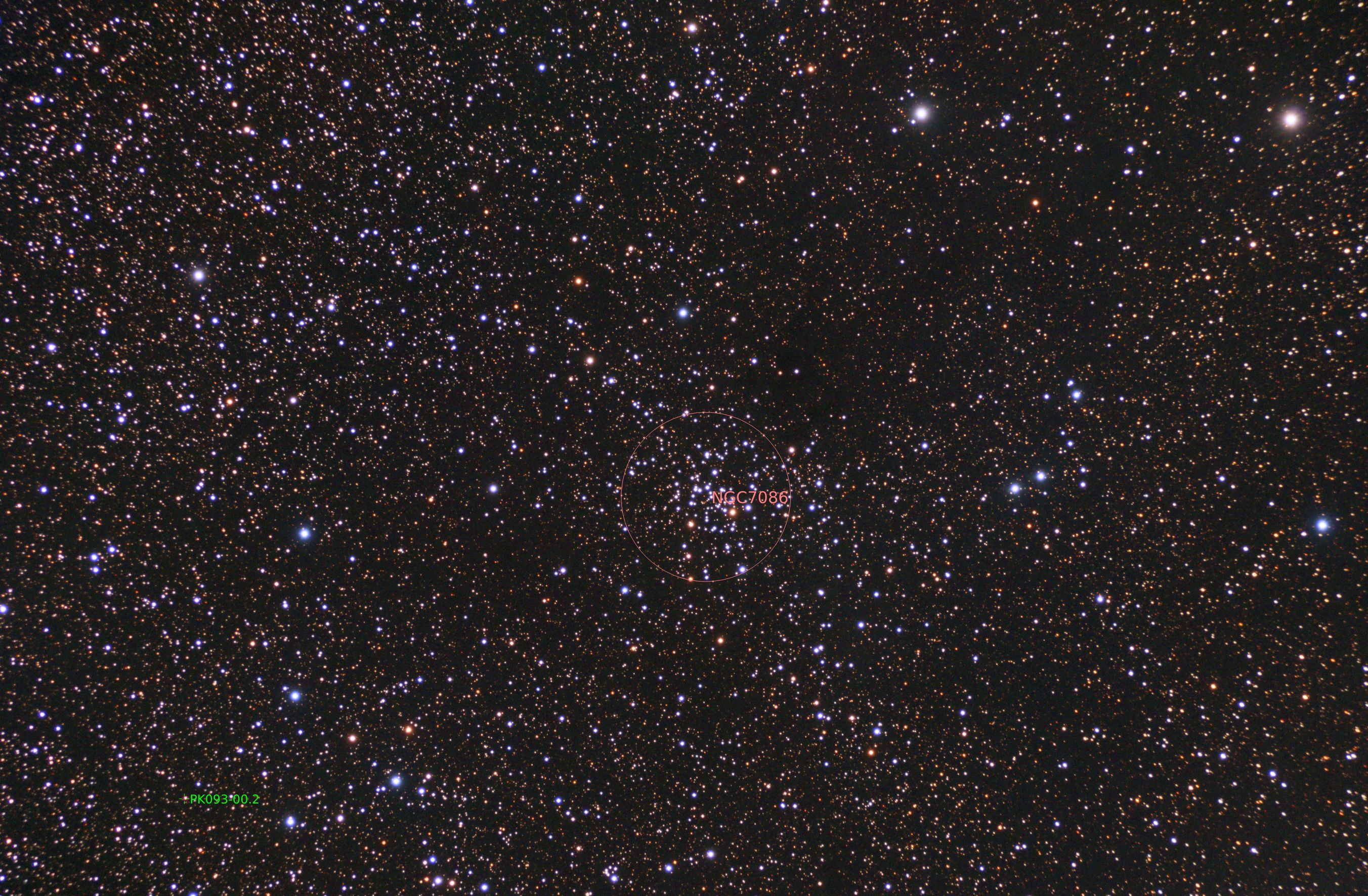
- Details
- Category: Open Clusters
- Telescope: Explore Scientific 127 Refractor
- Camera: ZWO 2600 MM